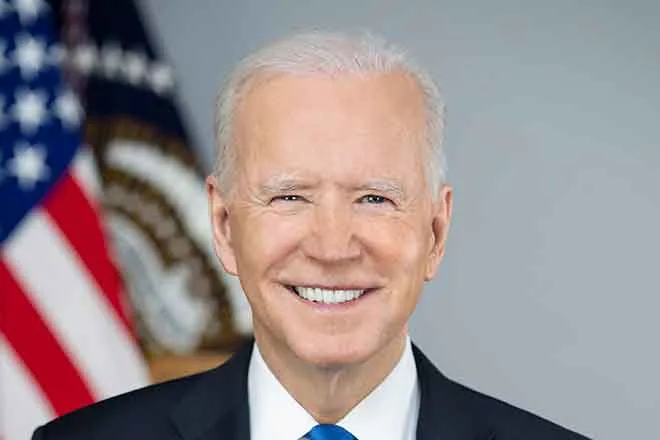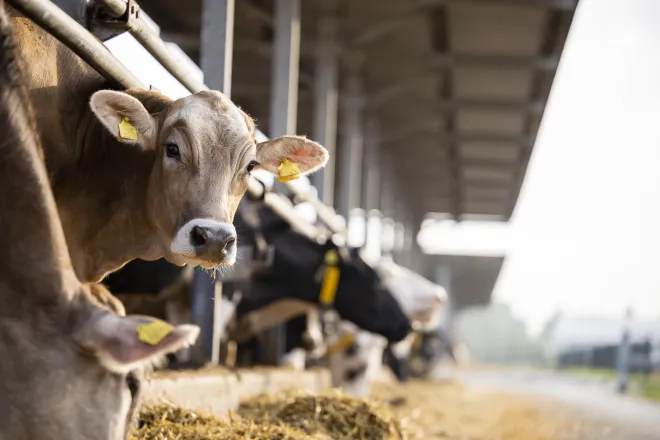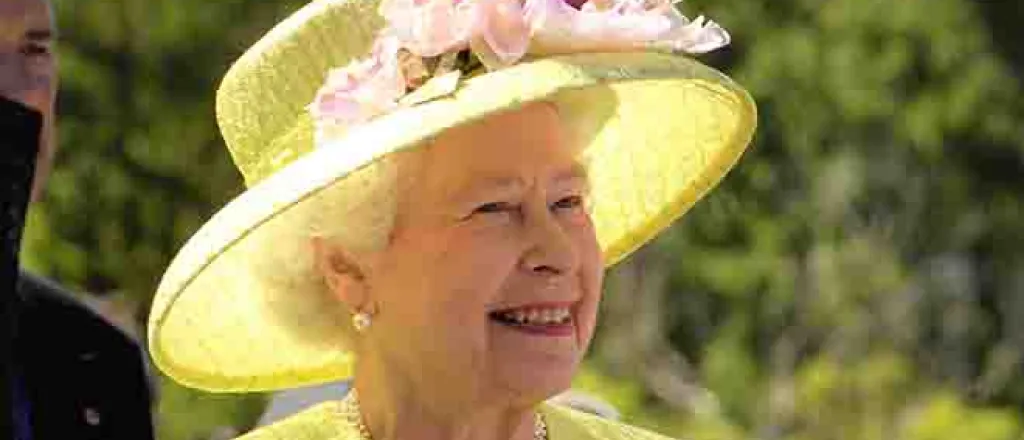
Queen Elizabeth II ascended to the throne at a time of deep religious divisions and worked to bring tolerance
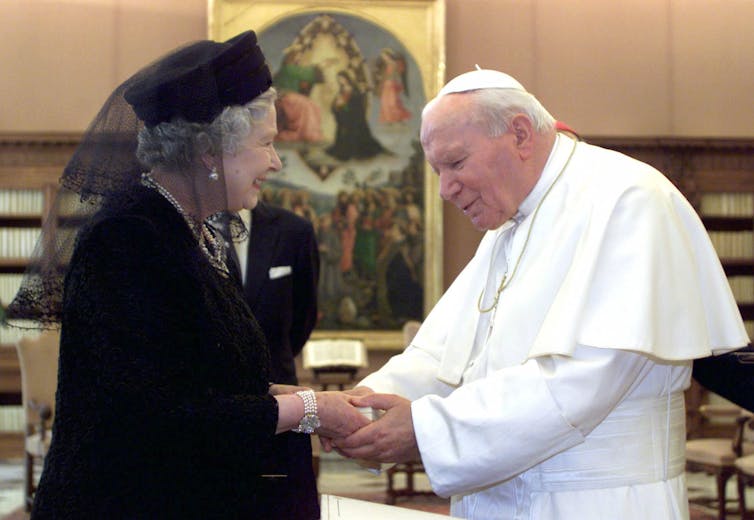
Thousands of Christian cathedrals and churches rang their bells for an hour at noon the day after Queen Elizabeth II died in honor of the 96-year-old monarch and her 70 years of service as queen of the United Kingdom.
The ringing of church bells across the country on the death of the monarch is a custom dating back to the early 13th century in Great Britain. As an expert in medieval liturgy and longtime participant in official dialogue between the Episcopal Church – a member of the community of global Anglican churches – and the Roman Catholic Church in the United States, the sound had a special poignance for me, and I thought of the queen’s lifelong commitment to British religious life.
Based on her Christian faith, the Queen encouraged dialogue and tolerance among different Christian churches and with other religions as well. This is especially true of the two oldest faiths in Great Britain: Catholicism and Judaism.
But to appreciate the significance of her efforts, it is necessary to understand the complicated history of these religions in the United Kingdom.
‘Defender of the Faith’
For centuries, English monarchs reigned as king or queen of England. But since the 16th century, they have also held the titles Defender of the Faith and Supreme Governor of the Church of England.
King Henry VIII received the title Defender of the Faith from Pope Leo X, then head of the Catholic Church, in 1521 after the king published a rebuttal of the ideas of Martin Luther, whose reforms launched the Protestant Reformation. Henry retained this title even after later breaking from the authority of the pope, titling himself Head of the Church in England.
With the exception of his Catholic successor – his daughter Mary I – all British monarchs have retained this title.
In the 17th century, some of the kings of England became personally sympathetic toward Catholicism. This was so unpopular that in 1689, Parliament passed a Bill of Rights, forbidding Catholics from ascending to the throne; it remains in force today. Until the 2013 Succession to the Crown Act, sovereigns were forbidden to even marry Catholics.
After the 1707 passage of the Articles of Union, these kings and queens reigned over an expanded realm consisting of England, Scotland and Ireland – the United Kingdom – but retained leadership only of the Church of England, the Anglican Church.
Most Irish were Catholic, while the Church of Scotland was Presbyterian. This Protestant church eliminated the ancient office of bishop and placed leadership in the hands of ordinary pastors, called presbyters or elders.
In the Articles of Union, the British monarch guaranteed the rights of the Presbyterian Church of Scotland, and every monarch since has sworn an oath to uphold them upon ascending to the throne.
No such protection was guaranteed to any other church or religion.
Continuing problems in Catholic Ireland
In 1649, King Charles I, who favored Catholicism, was deposed and executed by Parliament after a bloody civil war. The invasion of Catholic Ireland by Oliver Cromwell, a former member of Parliament, followed soon after, resulting in brutal massacres. Although the English monarchy was restored in England and Ireland in 1660, restrictions on Catholics in Ireland and Britain continued long after.
The freedoms of non-Anglican groups, including Jews, continued to be curtailed through penal laws until the 19th century. Tensions between Catholic Irish and Anglican British continued even after the laws were repealed.
They worsened when the Irish economy and population were devastated by the Irish Potato Famine, beginning in 1845, and Parliament was slow to respond.
Judaism in England
For two centuries, small communities of Jews in Britain lived quietly, protected by the British monarchy. They faced growing hostility in the 13th century due to the Crusades, religious wars to capture the Holy Land from its Muslim rulers, when Christian attitudes toward “foreign” religions hardened.
Since only Jews were allowed to lend money and collect interest – Christians considered this a sin – nobles in debt began to accuse Jewish lenders of “usury,” charging exorbitant interest on loans. They pressured the crown to take action, and in 1290, King Edward I expelled all Jews from the kingdom. They were not allowed to return until the 17th century by law.
Under Cromwell, Jews were unofficially allowed to return to England. Some were already residents there, including New Christians – Spanish Jews who had at least superficially converted to Christianity to avoid expulsion from Spain after 1492. Gradually, other groups of openly Jewish refugees were unofficially allowed to resettle in England.
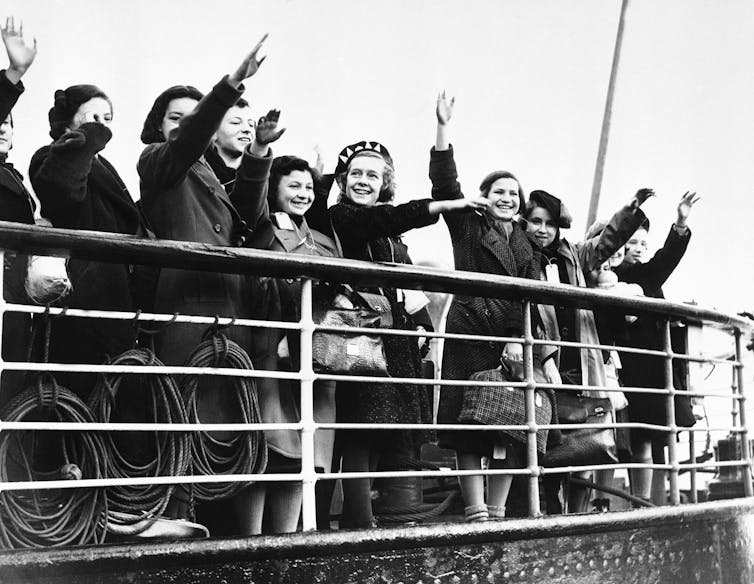
As Jewish immigration increased throughout the 18th and 19th centuries, restrictions were lifted and Jewish business became an important part of the British economy. Synagogues were constructed in London and other major British cities at this time, and worship was openly permitted. The Jews Relief Act of 1858 granted Jews the right to serve in Parliament. Despite this, antisemitism remained a strong part of British social and cultural life.
The queen and the past
In the early decades of the 20th century, British monarchs began to adopt a more tolerant attitude. The Queen’s great-grandfather, King Edward VII, took some important first steps. But Queen Elizabeth II made dialogue with non-Anglican Christian churches and non-Christian religious communities a priority during her reign, recognizing the increasing reality of Great Britain, especially England, as a multifaith nation.
In 1951, two years before Queen Elizabeth II took the throne, she met privately with Pope Pius XII – almost 400 years after Queen Elizabeth I was officially excommunicated by Pope Pius V for taking the title Supreme Head of the Church of England.
Queen Elizabeth II had a private audience with Pope John XXIII 10 years later – only the second reigning monarch of the U.K. to visit with any pope.
Her efforts to build a new relationship with the Catholic Church included ongoing interactions with the popes. An official state visit with Pope John Paul II followed in 1980, and that pope made a pastoral visit to Great Britain two years later — the first time any pope had ever traveled there.
Another private audience with John Paul II followed in 2000, and in 2010 the queen met with Pope Benedict XVI during his official state visit to the U.K. In 2014, she met with Pope Francis at the Vatican, a meeting commemorating 100 years of renewed diplomatic relations between the two sovereign states.
Violent resistance and tension continued in the independent Republic of Ireland and the United Kingdom’s Northern Ireland over independence until the Good Friday peace accords were approved by both sides in 1998. In 2011, the queen became the first reigning monarch to visit the Republic of Ireland, a signal of support of the republic’s independence and what has been called one of the “most significant” acts of her long reign.
The Jewish community in Britain has also been supported by the queen. Although she herself never visited Israel, several other members of the royal family did.
The queen also received visits from several presidents of Israel. Several times, she participated in Holocaust commemorations and visited memorials, including a 2015 trip to the Bergen-Belsen concentration camp, 70 years after it was liberated by the Allies. And in 2022, the Church of England issued an apology for its contribution to the expulsion of Jews from England in the 13th century.
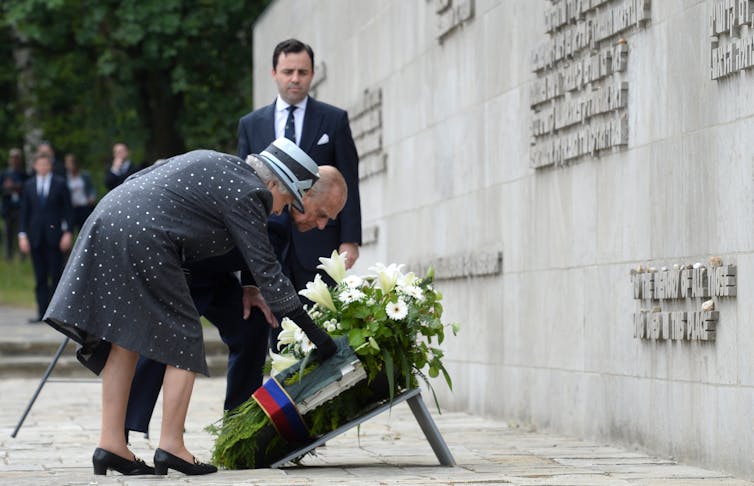
In 2012, Jonathan Sacks, chief rabbi of the United Hebrew Congregations of the Commonwealth, called the queen the “Defender of all Britain’s Faiths,” writing that, “No one does interfaith better than the Royal Family, and it begins with the Queen herself.”
The king and the future
Indeed, the former Prince of Wales suggested in 2015 that the title Defender of the Faith be understood more broadly, as simply “Defender of Faith.” He stressed that he wanted to be seen as a defender of religious rights in general, not just the Anglican faith.
And when his accession was proclaimed on Sept. 10, 2022, King Charles III took the long-standing oath to preserve the rights of the Church of Scotland using the same wording that his predecessors have since the 16th century – as Defender of the Faith.
There is little doubt that during his reign, King Charles III will continue to build on the foundation of toleration and dialogue laid down firmly by his mother. Modern Britain is a nation of many faiths, and a contemporary monarch will need to ensure that each of them is vigorously defended and warmly celebrated.![]()
Joanne M. Pierce, Professor Emerita of Religious Studies, College of the Holy Cross
This article is republished from The Conversation under a Creative Commons license. Read the original article.







